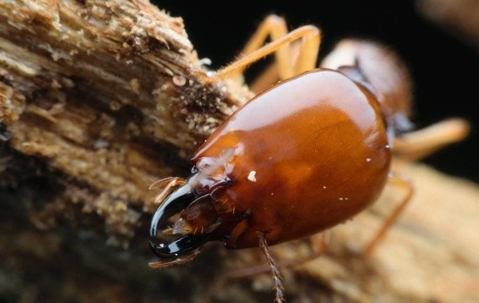Pest control in San Diego is an important part of every San Diego resident's property maintenance. One of the most infamous pests, termites, is a common wood-destroyer and nuisance.
There are three types of termites in San Diego that residents should be aware of: drywood termites, dampwood termites, and subterranean termites.
Drywood termites thrive in warm, dry spaces where they can infest hardwoods. These termites eat the wood they excavate and live within the wood as well. Drywood termites are white to pale brown in color and can measure up to one inch in length.
Dampwood termites often infest wet or rotting wood. As their name suggests, they require a high moisture content to live. Save for being slightly larger on average, dampwood termites look almost identical to their drywood termite cousins.
Subterranean termites are the only termite of the three to live outside of the wood they ingest. This species of termite prefer to live beneath the ground; they create mud tubes that bridge their home with their food source. Subterranean termites are often considered to be the most damaging to properties as they eat wood 24 hours a day, seven days a week. They are also the only termite species of the three to live within a caste system containing worker termites.
The Life Cycle Of A Termite Colony
Termite colonies are headed by a large, winged queen. The termite queen's sole purpose is to populate the colony with her offspring; she can lay thousands of termite eggs per day! Termite eggs hatch within one month into larvae. Termite larvae are soft and pale white. Larvae age up to nymphs, which look a lot like their adult counterparts. Nymphs care for the nest and acquire food for the colony. Some may go on to become soldiers or reproductives, or adult workers in the case of subterranean termites. Reproductive termites are capable of producing offspring and are the only termites that have wings. During the spring season, reproductives swarm in a mating flight in order to find a mate with which to establish a new colony.
How To Identify Termite Damage
There are several signs of termites on your San Diego property to watch for, such as finding mud tubes on your siding. Mud tubes, which subterranean termites use to travel between their nests and their food, look like small tunnels made of dirt and chewed wood. The most obvious red flag that signals termites are on your property is spotting termite swarmers around your property. When termites chew through wood, they destroy the structural integrity. Finding wood shavings, hollow-sounding wood, and tiny holes are all signs that termite damage has been inflicted upon your property.
Factors That Attract Termites To Homes And Yards
Several factors can attract termites to your property, such as:
- Standing water on your property
- Untreated lumber
- Storing wood close to the side of the home
- Direct soil-to-wood contact
- Poor or improper ventilation of spaces
These seemingly small errors can add up to a big termite problem for your San Diego home. Prevention is the simplest and most affordable way to keep termites away from your property.
The Best Way To Protect Your Home From Termites
If it is too late for termite prevention, then termite control conducted by professionals, such as Green Flash Pest Control, is a must. Green Flash Pest Control can offer efficient, safe, and reliable pest control to protect your home against termites for the long haul. For a pest-free home and peace of mind, reach out to Green Flash Pest Control today!

